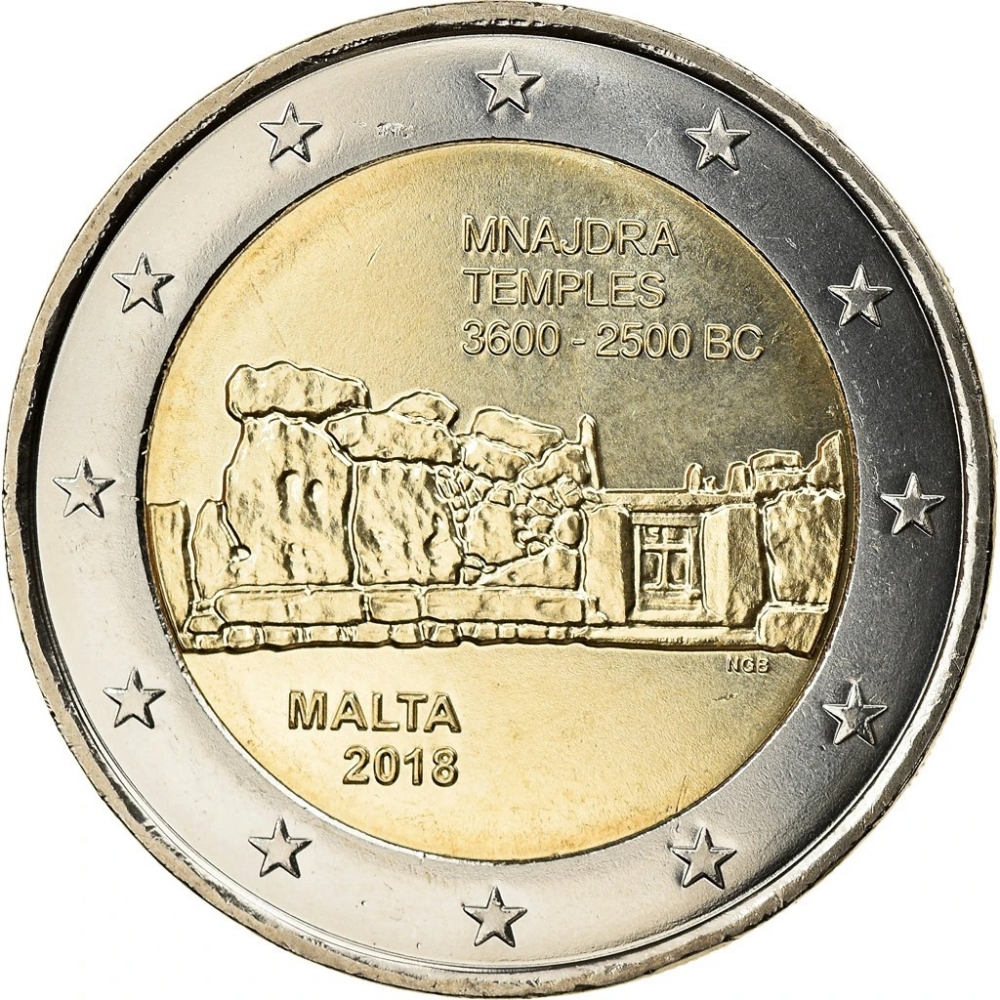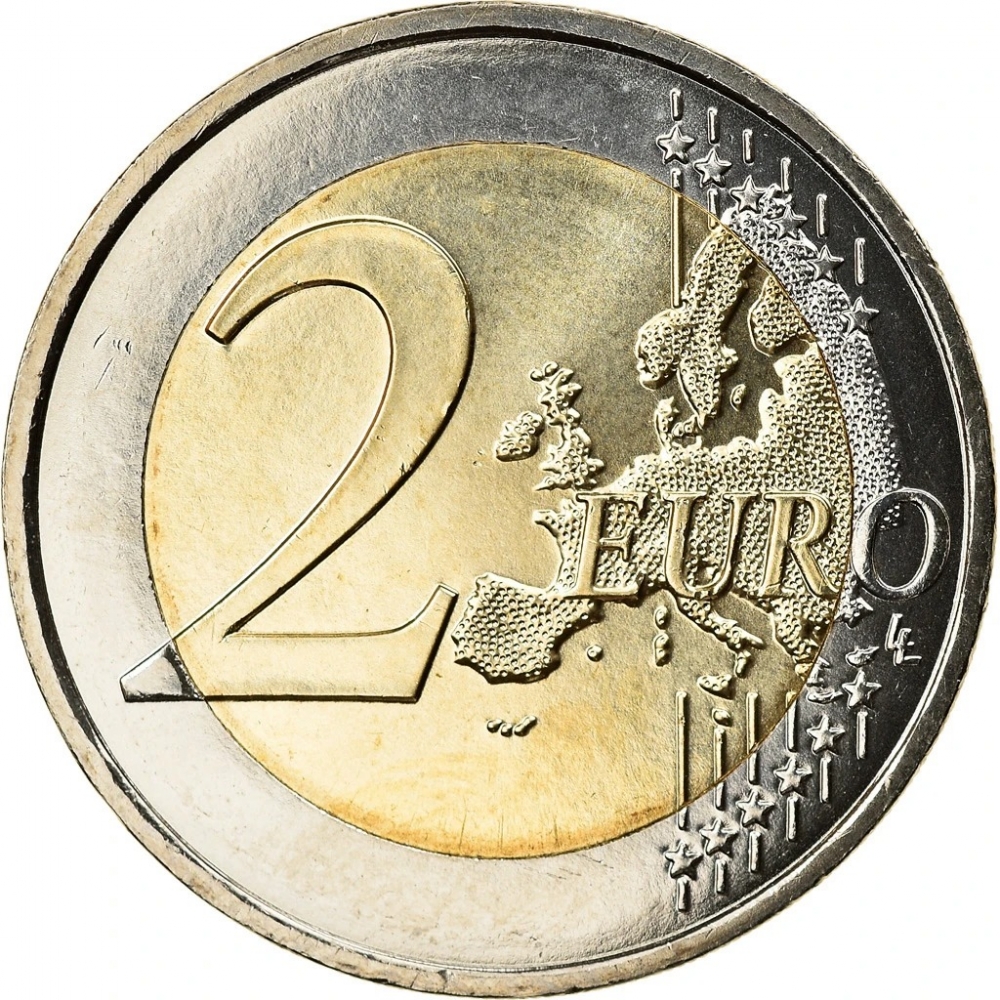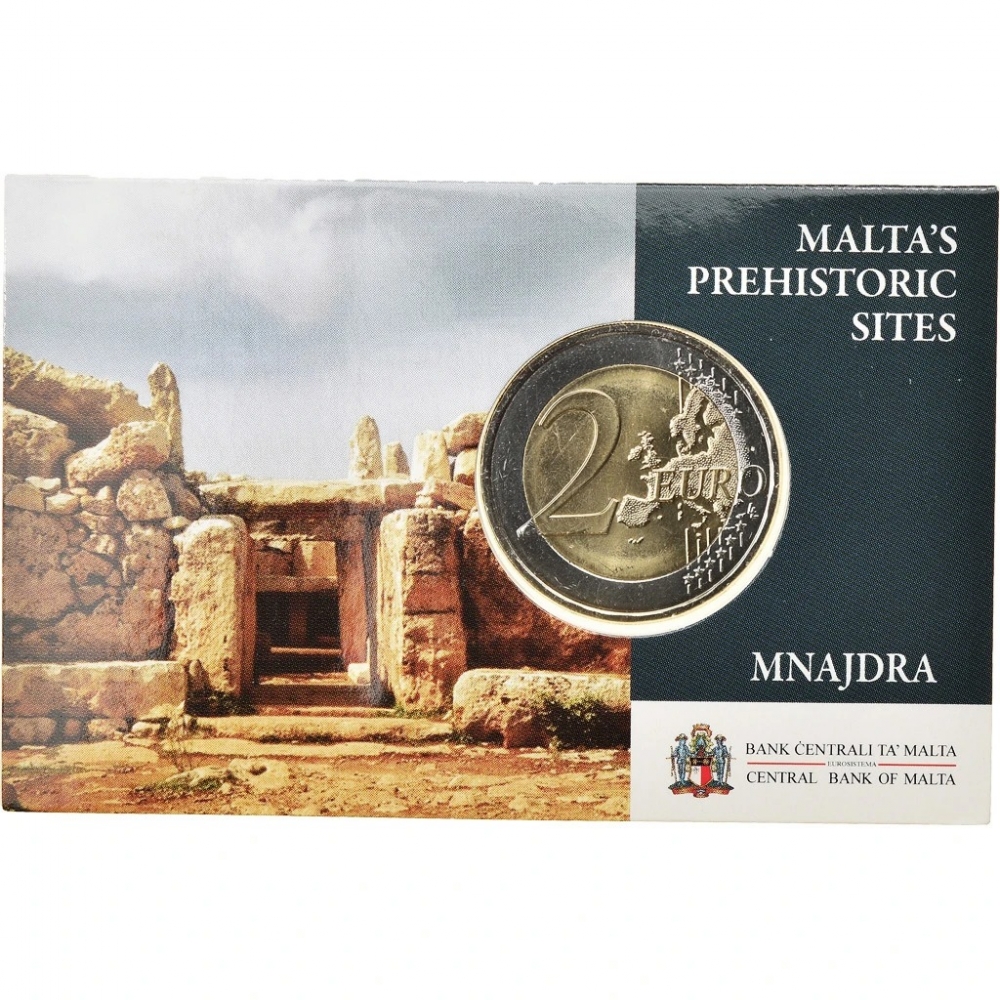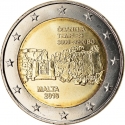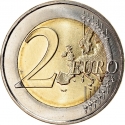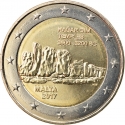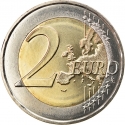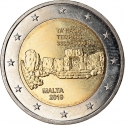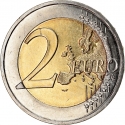You are about to finish your registration. Please check your mailbox (including spam folder). There should be a letter with a confirmation link. Check setting to make sure that your e-mail address is correct.
Send letter againDescription
This coin is the third in a series of seven coins depicting Maltese prehistoric sites.
There are two types of this coin (obverse):
• without mint marks (in rolls and coincards)
• with letter F in the star at 6 hours (annual set)
Obverse

|
Depicts a niche at the Mnajdra South Temple. MNAJDRA |
|---|---|
Reverse

|
A geographical map of Western Europe spans the outer ring and inner core on the right side of the coin. The inscription 2 EURO is superimposed over the map of Europe, with the numeral “2” located in an open field representing the eastern Atlantic Ocean. 2 EURO |
| Edge |
The sequence "2✠✠" repeated six times alternately upright and inverted. 2 ✠✠ 2 ✠✠ 2 ✠✠ 2 ✠✠ 2 ✠✠ 2 ✠✠ |
2 Euro
Maltese Prehistoric Sites
Mnajdra Temples
Subscribe series
KM# 191
Maltese Prehistoric Sites
Mnajdra Temples
Characteristics
| Type | Commemorative Issue (Circulating) |
| Material | Bi-Metallic |
| Ring | Cupronickel |
| Center | Nickel Brass |
| Weight | 8.5 g |
| Diameter | 25.75 mm |
| Thickness | 2.2 mm |
| Shape |
|
| Alignment | Medal |
| Mint |
Paris Mint (F)
|
